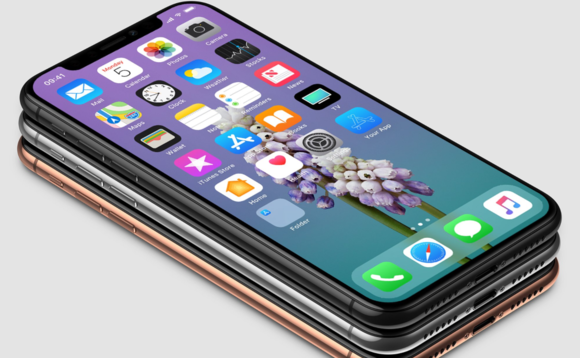
Many of you are receiving your new iPhone X now, and with that comes questions about the display. Apple wants their customers to know what they can expect color and hue shifting when using the iPhone X. This shift occurs when using the iPhone X at off-angles, and its a characteristic of the OLED display. Apple has published a new support document for the iPhone X that outlines some of the possible risks and benefits associated with the new Super Retina Display.
The iPhone X is the first iPhone to use an OLED display. It provides more vivid and sharper images. But the problem with the OLED display is that it can cause “burn-ins”. Burn-in is a common problem with OLED’s and comes from long-term use. It is also more likely to occur when the screen is constantly illuminated. This is also a problem with the Pixel 2 XL, which is why Google is working on an update for their phone.
Apple, however, says that they don’t have these problems with their Super Retina Display. Well, kind of. They warn that they have designed the iPhone X’s display to reduce, but not eliminate the effects of burn-in. Apple states:
“If you look at an OLED display off-angle, you might notice slight shifts in color and hue. This is a characteristic of OLED and is normal behavior. With extended long-term use, OLED displays can also show slight visual changes. This is also expected behavior and can include “image persistence” or “burn-in,” where the display shows a faint remnant of an image even after a new image appears on the screen. This can occur in more extreme cases such as when the same high contrast image is continuously displayed for prolonged periods of time. We’ve engineered the Super Retina display to be the best in the industry in reducing the effects of OLED “burn-in.”
Apple explains that iOS 11 is designed to minimize the effects of long-term use and extend the life of the display. Apple also provides some suggestions on what you can do to minimize the effects of long-term use and extend the viewing life of the Super Retina Display. They suggest:
- Update your iPhone X to the latest version of iOS. When a new update is available, you’ll see a prompt to update. You can also check for updates in Settings > General > Software Update.
- Use Auto-Brightness to automatically adjust the brightness of your display based on the ambient light in your location. This setting is on by default. To check this setting, go to Settings > General > Accessibility > Display Accommodations.
- Set your iPhone X to turn off the display when you aren’t using it. Choosing a shorter time is recommended. To adjust this setting, go to Settings > Display & Brightness > Auto Lock.
- Avoid displaying static images at maximum brightness for long periods of time. If you have an app that keeps your display on when you aren’t actively using your iPhone X, you can temporarily reduce the brightness level using Control Center.
Apple notes that a small amount of burn-in or shifts in color might occur, and that’s normal. Burn-in is annoying, but is it something you can live with? As technology advances more and more, these are the kinds of things we might have to sacrifice. Will consumers be ok with that? OLED provides an extremely high contrast ration and high resolution, so you’re getting a better view. It’s the first iPhone to use this technology, and as they always do, it will improve over time.

[…] post Apple says iPhone X OLED Burn-in, Color and Hue Shifting is “Normal” appeared first on Saintel […]